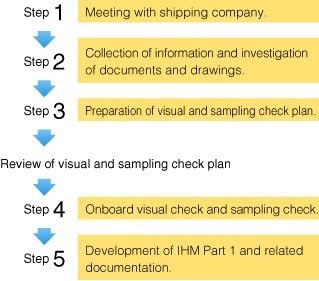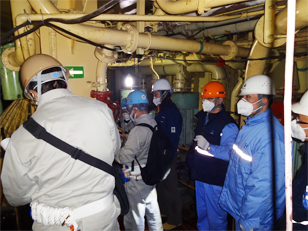December 2020 will be a key month for the EU’s Ship Recycling Regulation (SRR). Adopted in 2013 and aimed at reducing negative environmental impacts associated with recycling ships flying the flags of EU member states, the regulation sets out requirements that ships and recycling facilities must fulfil.
A key element of this is the Inventory of Hazardous Materials (IHM), which since 31 December 2018 has been required for newly contracted vessels with a gross tonnage of 500 or more flying the flags of EU member states. From 31 December 2020, this requirement will be expanded to the existing EU fleet. But owners of non-EU flagged vessels also need to have an understanding of the SRR and IHM process as, from 31 December 2020, equivalent non-EU flagged vessels calling at EU ports or anchorages will also be required to carry and maintain an IHM.
The elements of the SRR relating to vessels coming to the end of their working life, applying to ships flying the flag of EU being sent for recycling, have been in force since 31 December 2016. Before delivery to a recycling facility, vessels should have parts 1, 2 and 3 of the IHM completed in order to receive an International Ready for Recycling Certificate from their class society.
The IHM covers fifteen substances and is aimed at controlling and documenting hazardous materials on board ships. It requires expert knowledge to compile and will be produced by a third-party inspection specialist and validated by class.
CTI Marine Services is a Singapore-headquartered organisation that has already been involved in production of thousands of IHM projects. CTI Marine Services is the maritime specialist arm of Centre Testing International (CTI), a China-headquartered international conglomerate that provides a range of testing, environmental safety and material reliability services spanning industrial products, consumer goods and maritime hazardous materials management. We spoke with CTI Marine Services business manager Andreas Lougridis to understand more about what exactly is involved in producing the IHM, and what owners need to know before they go about commissioning a report.
“Many owners don’t know how time-consuming the IHM is, and how much effort has to be put in for a successful completion,” says Mr Lougridis.
As the IHM is a ship-specific project, inspectors will collect drawings and prepare a visual sampling check plan (VSCP) identifying from which locations samples must be taken.. This process is carried out at the inspector’s office and takes one or two work days.
Once the VSCP has been drawn up, the inspector can go on board a vessel to collect samples. Mr Lougridis notes that based on CTI Marine Services’ experience, two days or 20 man hours is sufficient for the sampling process to be completed.
With the samples taken, the next step is for them to be sent to a laboratory for testing. The length of time this takes depends on the inspector and which facilities they are using. For CTI, which has in-house labs, this process takes around 10 days, following which the final report can be compiled.
“From zero to final reporting takes an average of 20-30 days, and once we’re finished, class will take over to review our reports,” Mr Lougridis explains.
This can take as little as 2-3 weeks or up to three months, depending on where the review takes place. And once this review is completed, a class society inspector will go on board the vessel to perform a verification survey, which will take about half a day, following which, assuming all is as it should be, a Statement of Compliance (SoC) validating the IHM can be issued by class on behalf of the vessel’s flag state.
“So from the very start to issuing the SoC, we’re talking a minimum of two months and – from our experience – as much as five months per vessel.”
The IHM is reviewed on each special survey, so about every five years, and if properly maintained the SoC will be re-endorsed in a process that will be repeated throughout the vessel’s working life.
This article is the first in a series of three looking at issues surrounding the IHM process and what shipowners need to be aware of. In the next article in this series, we will look at what shipowners need to be aware of when planning IHMs and how to avoid associated pitfalls.
CTI Marine Services and Riviera Maritime Media are jointly hosting a webinar on the Inventory of Hazardous Materials, detailing what every vessel operator needs to know and do by 2020, on Tuesday, 10 December 2019 at 9:30am GMT. Book here to register for the webinar.
Source: rivieramm















